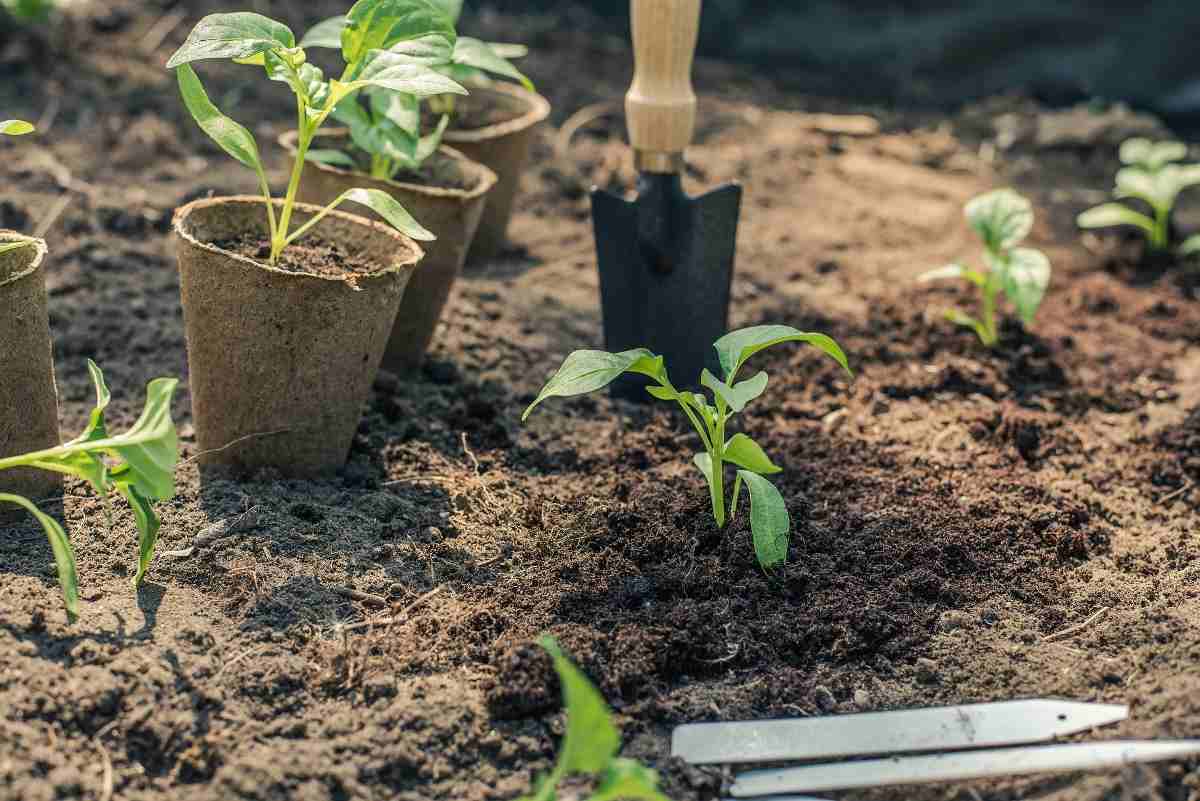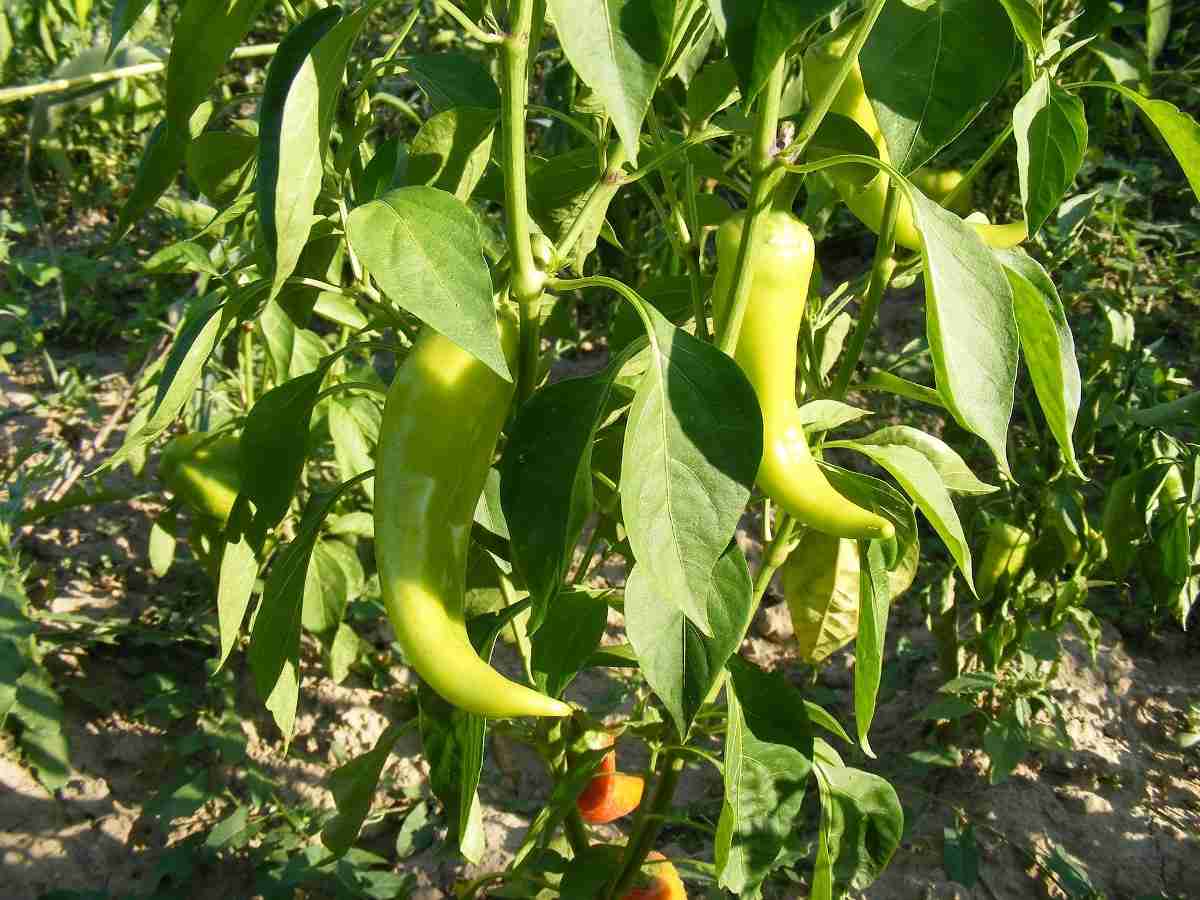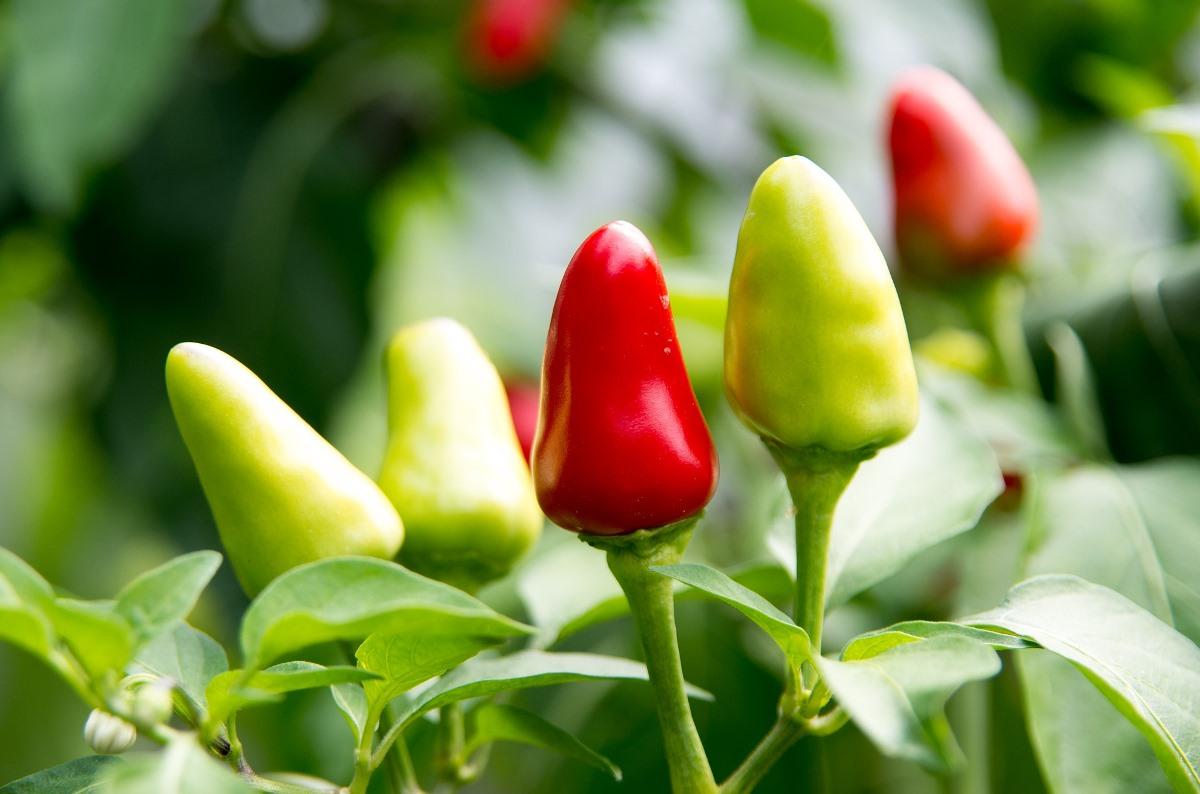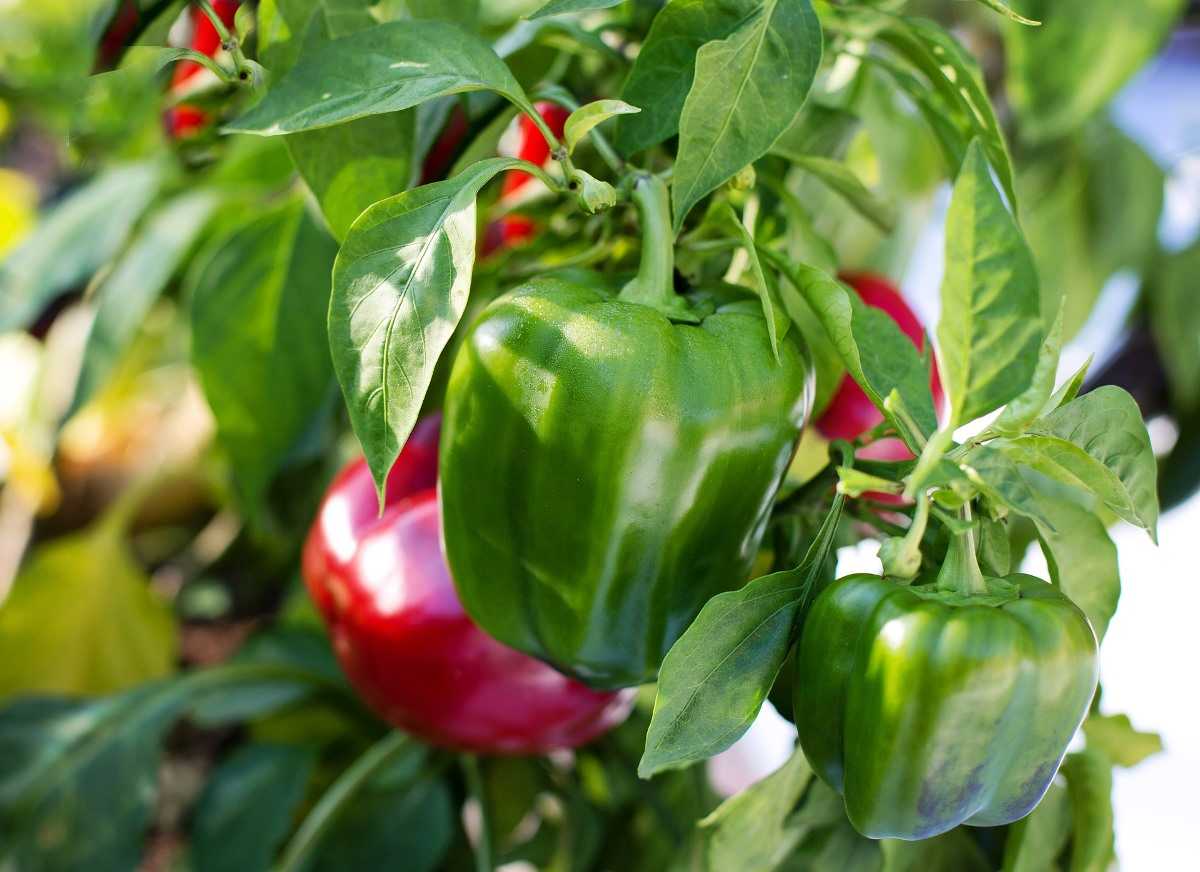Growing Peppers Tips, Ideas, Techniques for Beginners
Growing Peppers at home is a great way to have fun with indoor gardening while growing delicious ingredients for your favourite spicy (or mild) recipes. Peppers that are cared for properly can live and produce Peppers for several years. Most Peppers are easy to grow indoors, but they require the right conditions to grow. In this article we also discuss below topics;
- Growing Peppers in pots indoors
- Container size for Peppers
- Why Pepper plant leaves turning yellow
- Best Peppers to grow in containers
- Pepper plant care
- What is the best time to grow Peppers
- Should you water Pepper plants every day
- Growing Peppers from seed
- Growing Peppers in containers
A Step By Step Guide to Growing Peppers in Containers
Best Soil for Growing Peppers
Peppers prefer light soil such as sandy loam, loam or clay loam soils, well-drained, rich in organic matter for good fruit production. The preferable pH level of the soil should be between 6.5 and 7.5. Then, prepare the garden soil well in advance, adding organic matter and compost if needed. The soil should be of good tilth like soft, crumbly and easily worked. Peppers prefer deep and aged-compost–rich soil. Choose a sunny and well-drained spot where Peppers haven’t grown recently. The soil should be deep, rich, and loamy for growing Peppers.
Different Varieties of Peppers suitable for indoors
The best Peppers to grow indoors in containers are smaller Peppers such as chiltepins, habaneros and Thai Peppers, Poblano Pepper, Shishito Pepper, Bulgarian Carrot Pepper, Fushimi Peppers, Devil’s Tongue Pepper, Early Jalapeño, Bolivian Rainbow Pepper, Goat Horn Pepper, or small ornamental varieties.
How to Grow Peppers at Home

Step 1) Growing Peppers in your garden is beyond rewarding. Indoor plants need the same requirements as those grown outside and they need enough space in a container for their roots to grow. They need plenty of sunlight and south- or west-facing window is ideal. If you don’t have enough light available for growing Peppers, use a grow light.
Step 2) Most Peppers like a temperature of about 27°C during the day and 21°C at night. You can increase the temperature by putting the Pepper plants under light or on a heat mat.
Step 3) If the growing season is coming to an end but you have surviving plants outside, bring those in containers indoors. If they are in the garden, dig them up carefully and repot them in a plastic pot in the evening when temperatures are cool.
Step 4) It’s easy to give your plants the right amount of water. Just add water to the pot when the top of the soil begins to feel dry. Never water so much that a pool of water forms on the soil, as this will cause disease in your Pepper plants.
Step 5) After the plants have acclimated, bring them indoors and put them either under grow lights or in a south- or west-facing window. If you are starting from scratch, plant the Pepper seeds in an equal mix of vermiculite, peat moss, and sand (soilless medium) in a pot with adequate drainage holes. Push the seed just below the soil level and keep the soil moist.
Step 6) Depending upon the variety, seed germination should occur between 14-28 days. Water the Pepper plants when the top of the soil feels slightly dry to the touch. Avoid overwatering the Pepper plants roots rot. Feed Peppers with a balanced fertilizer such as a 15-15-15.
Tips for Growing Peppers Indoors
- Pepper plants need well-draining soil that is rich and loamy but avoids too much nitrogen in the soil. Plant Peppers in a bed that receives full sun and provide a sandy loam soil that drains well.
- Depending on the size of the Pepper varieties, spacing must be 12 to 18 inches apart. Pepper plants do well in warm climates. So, keeping the space where you have them growing at a constant temperature at 18 to 23°C is perfect. This temperature range is vital to ensure your plants continue to produce Peppers throughout the year.
- Peppers need warmth and sunshine to thrive. Warmth is important for germination and then to encourage strong growth of the seedlings, so the plants will need to be started indoors or undercover in most climates.
- Pepper generally like a lot of direct light. However, when planting Peppers from seeds, you will want to start them off with indirect or filtered light until they grow a bit.
Step-By-Step Process for Growing Hot Peppers from Seeds

Step 1) Growing Peppers indoors from seeds is fairly simple and can be done at any time of year. The seeds should be planted in a mixture of peat moss, vermiculite and sand (roughly equal parts of each). Place 2 seeds in each pot near its centre, and push the seeds just below the surface of the soil. Then, keep the soil moist but not wet, and keep pots in a spot where they will get sunlight throughout the day.
Step 2) It’s good to get started about 6 to 10 weeks before the last average frost date in your area. In most climates, January is a great time for germinating hot Pepper seeds, but you could want to start as early as November or as late as February. Keep in mind that super-hot Peppers, like habanero or Scotch bonnet, take longer to germinate than milder Peppers, and they also need more warmth.
Step 3) Most Pepper seeds sprout in about a week at a temperature of 21-26°C, but germination can be spotty depending on the variety. Pepper seeds should be planted ¼ inches deep in a fine-textured seed-starting mix or vermiculite to provide good drainage.
Step 4) Soak the hot Pepper seeds in warm water overnight and fill a tray of celled containers with seed-starting mix. Water well, and then set the trays aside to drain until the mix is moist but not soggy. Then, sprinkle seeds over the surface of the moist seed starting mix. Cover the tray or pot with clear plastic or slide it into a white plastic garbage bag.
Step 5) Germinating hot Pepper seeds requires warmth. The top of a refrigerator or other warm appliance works well, but you could want to invest in a heat mat. A temperature range of 19-21°C is ideal and checks the trays frequently. Watch for the Pepper seeds to germinate, which may occur as soon as a week, or may take as long as 6 weeks, depending on temperatures and variety. Remove the plastic as soon as the Pepper seeds germinate. Then, place the trays under fluorescent bulbs or grow lights. The seedlings need at least 6 hours of sunlight per day.
Step 6) Peppers are ready to pick from late summer. Pick them when the Peppers are green colour or leave them to ripen (most varieties ripen to red or yellow), to develop a sweeter flavour. Keep feeding plants with a high potash fertilizer to promote fresh flower growth.
Growing Peppers in Containers
- Broccoli Seed Germination and Selection
- Asparagus Seed Germination and Variety Selection
- Seasonal Flower Gardening: Best Practices for Spring, Summer, Fall, and Winter
- How to Grow Hibiscus from Flower
- Plantation Ideas for Home Decoration: A Beginners Guide
- Flower Garden Designs and Layouts for Beginners

Growing Peppers in containers is easy and need some care. Peppers need room for their roots to spread, so select a container at least 12 inches in diameter. A young Pepper plant initially appears small in such a large vessel, but it will fill out the container when it’s full size.
Purchase a container with holes in the bottom, or drill your own to ensure adequate drainage levels. Use a plastic or metal pot because Peppers require consistently moist soil. Container growing Peppers need important things like water and light. First, your Peppers will need 5 hours of direct sunlight. Second, your plant is entirely dependent on you for water, so make sure that your container growing Pepper plant is located somewhere that you will be able to easily get water to it daily.
Containers – Pepper plants do well in raised beds and containers. And, make sure the containers are at least 12 inches wide and 18 inches deep per plant. Peppers have abundant roots.
Spacing – Space plants 12-18 inches apart in rows 2 to 3 feet wide. For square foot gardening, plant one per square.
Fill Your Container with Organic Potting Mix – Use potting mix or a seed starting mix for your Peppers. Look for a natural, organic potting mix-they’re formulated for containers with nutrients already added. A good potting mix will hold moisture and also good for plant growth.
Container growing Peppers can be fertilized with compost tea or a slow-release fertilizer once a month. Growing Peppers in pots can be fun and makes these tasty vegetables available to many gardeners who don’t have a traditional, in-the-ground garden. Peppers require consistently moist soil, and container-growing Pepper plants require more frequent watering than those in the ground. Plan on watering daily, especially in midsummer. Before watering, check the soil; you’ll know the Pepper plant needs water if the top inch of soil is dry. If it’s not dry, don’t water-you’ll risk overwatering the Pepper plant. Water the plant early in the morning. Peppers can be picked when they turn green colour or left on the plant to turn yellow, orange and then red.
How to Germinate Pepper Seeds Fast
- Start Pepper seeds 6 to 8 weeks before you plan to plant them outside. Use pots with drainage holes and a separate water tray to allow excess moisture to drain.
- Wash pots with hot water and soap. Mix about 9 parts water with 1 part bleach and rinse the containers with the mixture to remove any bacteria and fungus.
- Then, fill the planting container with seed starting mix. Use a packaged soilless blend or making by using one-third peat, one-third sand and one-third vermiculite.
- Mist the planted pot with water at room temperature until the starting mix feels damp all the way through. Cover the pots with a humidity dome or plastic film.
- Place the planters in a warm location and Pepper seeds need temperatures around 21 to 26°C to germinate. Then, use a seed starting heat mat with the thermostat to ensure consistent and accurate temperature levels. Seed germination takes 7 to 14 days for most varieties of Peppers. Remove the plastic cover when seedlings appear.
Water Requirements for Growing Pepper Plants
If you are trying to grow Peppers in pots you will need to water much more frequently than if you were growing them in the ground. Providing plants with adequate water is essential from the moment the plant’s flower until the harvest.
The weather conditions and the size of your pot will determine how often you need to water Pepper plants. During the longest hottest days of the summer season, that maybe every day. During cooler weather and spring and fall you may need to water them every 2-3 days. If it feels very dry, go ahead and give Pepper plant water.
Underwatering or a lack of nutrients in the soil is one of the most common reasons for yellow leaves on a Pepper plant. If you think this is the reason your plant leaves are yellow, increase watering, and apply some balanced fertilizer.
Under Watering Pepper Plants
Symptom – Green, Droopy Leaves
The Pepper plant needs more water. Peppers love full sun, but they can get large and do need a lot of water. Watering Pepper plants early morning and in the evening after the sun has lowered are the best times. And, avoid overhead watering when the sun is strong. If the plant is dehydrated during mid-day, use a watering can to get water directly to the soil near the plant.
If droopy plant leaves are common mid-day, either increases watering amount or frequency. If in a pot, transplanting into a larger pot, adding more soil to the existing pot, or moving the pot to a shadier location can help. Common plant dehydration will result in reduced growth and yield.
Common Problems When Growing Peppers
Peppers can be attacked by aphids, Pepper maggots, Pepper weevils, Colorado potato beetles, leaf miners, flea beetles, and corn borers. Control these pest insects with insecticides like Bt for the caterpillars and pyrethrum for the other’s problems. Hot Pepper spray will also repel these pests. To make the hot Pepper spray, combine a handful of hot Peppers, several cloves of garlic, a tablespoon of non-detergent soap, and three cups of luke-warm water.
Use organic pesticides to eliminate some common pests in Pepper plants. Destructive caterpillars such as cutworms, tomato hornworms, and borers are easily controlled with Bacillus thuringensis (Bt or Thuricide). Rotenone and pyrethrum will handle some pests like pepper maggots, leaf miners, flea beetles, and aphids. Plant disease-resistant plant varieties, especially if anthracnose, mosaic, and bacterial spot are a problem in your area. Avoid working in the garden after a rain. Diseases can spread rapidly among wet Pepper plants.
Cutworms – These creatures go after baby Pepper plants. It may appear that someone has come into your garden and cut your Pepper plants stem with scissors. Cutworms cut off a young plant at the base but some species will crawl up the plant. Peppers are mainly susceptible to them.
Control this problem by putting a paper or cardboard tube around the Pepper plants. If they’re causing damage you can also use Bacillus thuringiensis spray.
Aphids
Aphids are little pests that gather at the bottom of your plants. They cause discolouration on the plant leaves and secrete a sticky substance known as honeydew, which can attract mould and fungus. You can deter these pests by introducing ladybugs into the garden. You will want to avoid some plants such as fennel, mint around your Pepper plants because they attract aphids. Instead, plant items like mums, cosmos, and zinnias in the garden to deter aphids. Also, you can use neem oil to control them.
Hornworms
Handpick hornworms to remove them from your plants, or you can introduce other bugs such as ladybugs or parasitic wasps.
White Flies
These bugs are dangerous to your plants because they not only feed on your plants, causing discolouration or even death, but they also carry plant viruses that can kill your plants. Introducing bugs that feed on these flies is the best method to eradicate them from your garden. Ladybugs, pirate bugs, green lacewings, and big-eyed bugs will help to remove whiteflies from your plants.
Powdery Mildew
This is a fungal disease that makes it look like someone sprinkled baby powder on the leaves of Pepper plants. Leaves often curl and drop off. Use an organic fungicide like Actinovate or neem oil.
Tips for Feeding Pepper Plants
- Peppers are heavy feeders that love moist soil. Don’t give your Pepper plants too much nitrogen. If you do, you will produce large, leafy plants but have no Peppers. Vigorous growth can make them more susceptible to disease. Other than the use of magnesium when planting, don’t fertilize your Pepper plants until the first flowers appear.
- A side-dressing of aged compost or low nitrogen, an organic fertilizer will work well for Pepper plants. After the first feeding, feed again in the 3 weeks.
- Peppers plants will benefit from receiving the mineral supplement. Calcium produces thick, sturdy walls in fruits; phosphorous promotes a strong root system and good fruit set, and magnesium optimizes plant growth and improves the uptake of nitrogen and phosphorus.
- Peppers like a light foliar feeding every couple of weeks, especially when the crop is heavy. Use a fertilizer that is low in nitrogen.
When and How to Harvest Peppers
Peppers are ready to go after 60 to 90 days when they’ve reached their full colour. Pepper plants reach maturity before the Peppers change colour. Most growers harvest Peppers when they’re green. Use scissors, hand pruners, or a sharp knife to remove the Pepper from the plant. All Peppers start green and then turn colour as they mature. Red, green, and yellow colour bell Peppers will start green but turn colour as they mature. Most hot peppers will turn red colour when mature but can be eaten green.
You’ll know Peppers are ready to pick when they are shiny and bright, and the colour is vibrant. To harvest the Pepper, simply cut the Peppers off the plant with a sharp knife. This is better than trying to pull the Peppers off, which could damage the Pepper plant.
Commonly Asked Questions about Growing Peppers
You should not miss this: Growing Organic Aspagarus In Containers.

Why didn’t my Pepper seeds germinate?
The number one reason that Pepper seeds don’t germinate is if they are kept below 26°C when germinating. Pepper seeds germinate successfully when the temperature kept consistently moist at 29-32°C during the germination process.
Do Peppers grow better in sun or shade?
The Pepper plants grow well in raised beds, containers, and in-ground gardens. Plant them 18 to 24 inches apart in a sunny and well-drained spot. Peppers need at least 6 to 8 hours of sunlight per day. Mix compost or other organic matter into the soil when planting Peppers.
How much time does it take for Peppers to grow?
The plant growth cycle varies depending on the plant varieties, the climate it’s growing in, and the care it receives. The average days to maturity on a Pepper are between 70-150 days.
How long do Pepper seeds take to germinate?
The seed germination time will depend on the variety of Pepper, the age of the seeds, and the conditions under which the seeds are germinated. Pepper seeds take about 2 weeks to germinate.
In case if you are interested in this: Hydroponic Garlic Farming.